What Animal Sucks The Insides Out Od Tomatoes In My Garden
Tomatoes are the most commonly grown plant in the home vegetable garden. Tomatoes are relatively easy to grow, and at that place is a wide diverseness of dissimilar types. If yous're growing tomatoes, you'll more than likely encounter a few pests and diseases forth the way. So, let'southward have a moment and talk virtually some common bug we encounter when growing tomatoes.
Insects
Aphids are small, soft-bodied, pear-shaped insects with long legs and antennae. They can vary from green, yellow, blackness, grayness, or red. They are nigh commonly plant in clusters on succulent young shoots and leaves.
Whiteflies are also small-scale insects. The bodies and wings of adult whiteflies are covered with a white powdery wax, thus their proper noun. They can be establish on the undersides of leaves, and, when disturbed, will fly off. The nymphs (immature stage) will attach themselves to the undersides of leaves and don't movement.
Both aphids and whiteflies have straw-like mouthparts (insects with this blazon of mouth are commonly called sucking insects), and when they feed leaves may go curled, puckered, and brainstorm to turn yellow. While they rarely impale plants, if populations get high, it can effect in stunted growth (reduced vigor) of the plant.
Aphids and whiteflies can often be managed by spraying them with a potent stream of h2o to knock them off of plants. They are normally fastened by natural enemies such equally lacewing larva, lady beetles, and parasitoid wasps. Be on the lookout for these natural enemies and accept steps to encourage them in your garden; they may take intendance of the trouble for yous! If you have a big infestation of whiteflies, you can try placing yellow sticky cards most the plants to trap the adults. Finally, if populations get likewise high, pesticides tin can exist used to manage them.
Hornworms are large (3+ inches when fully grown) light-green caterpillars that tin cause quite a bit of damage to tomato plants. There are 2 species y'all may come across on tomatoes: tobacco hornworm and tomato plant hornworms. Tobacco hornworms have 7 diagonal white lines on each side, & a curved red horn at the hind end. Tomato plant hornworm has 8 5-shaped marks on each side, & the horn is bluish-blackness. These caterpillars will eventually become hawk moths.
Hornworms will overwinter every bit a pupa underground. One way to foreclose hornworm problems if you've had them in the past is to destroy these pupae, either by tilling or hand picking them out of the garden. Caterpillars can too be handpicked off of plants and disposed of. You may likewise notice caterpillars that take white projections coming out of them. These are the pupa of parasitoid wasps that have been eating the insides of the caterpillar. If yous find these go out them in the garden so the wasps can go and assail other caterpillar pests for you.
Tomato fruitworms are caterpillars that may occasionally show up in your tomatoes (they are the aforementioned insects we call corn earworm). The larvae are green to reddish to brownish in colour with light and dark stripes on their bodies. They volition burrow into and consume fruit. You will unremarkably observe a hole at the base of the fruit stalk. When the tomato is cut open, yous volition detect tunnels that volition oft accept frass (insect poop) and disuse within.
Since they usually damage less than 5% of a ingather, management of them may non be needed. If you practise accept issues with them, a pesticide tin be applied to tomatoes at 4- to x-day intervals (read the label to see how often) starting when the fruit is small-scale.
Diseases
Early blight primarily infects the leafage of plants, just it can likewise bear on the stalk and fruit. Information technology appears as irregularly shaped brown spots that take concentric rings (resembles a bulls-heart or target), usually on older leaves. The spots are often surrounded by yellow tissue. The spots can abound to be ¼ to ½ inch in bore and will oftentimes grow together (coalesce), forming large brown areas. Eventually, leaves will drop off of plants.
Septoria leaf spot also primarily infects leaves, but volition also infect the stems. It forms minor (1/16 to 1/8 of an inch) circular spots on leaves. These spots have a tan or lite-colored heart with nighttime purple or brown margins. Like early on blight, the private leaf spots will often coagulate, forming large areas of diseased tissue. Heavily infected leaves volition turn yellowish and fall off of the plant. Unlike early on bane, it does not form concentric rings. But, if you await closely (may need to employ a magnifying glass), you can frequently see pocket-sized black pimple-similar fruiting bodies in the center of the leaf spots.
Anthracnose is primarily a fruit disease. Round sunken lesions develop on fruit. Over time these spots will enlarge and darken. Often pink to orange masses spores form in concentric rings on the surface (when it's humid). Anthracnose may occasionally be found on leaves and stems where it will cause irregularly shaped brown spots with dark chocolate-brown edges.
When it comes to managing diseases in tomatoes, in that location are several things you can do.
- Try to select cultivars that have resistance to disease, particularly if you've had issues in the past.
- Exercise crop rotation. Ideally, you wouldn't abound any solanaceous (tomato family; includes peppers, eggplants, and potatoes) plants in the aforementioned expanse (this is oft easier said than done in backyard gardens). Early blight can survive in the soil, on seeds or infected plant debris for a year. While Septoria tin can survive for up to 3 years on infected found droppings, as well as weedy hosts, it does not survive in the soil on its own.
- If you are purchasing transplants, audit plants for any leaf spots (and insects) before purchasing.
- Brand sure to space your tomatoes properly. Adequate spacing will permit airflow between plants, and it will allow them to dry out-out faster (establish pathogens need moisture to survive).
- Using mulch on the ground creates a barrier betwixt the soil, where disease spores may exist, and the plants. This will help prevent whatsoever of the pathogens from splashing onto the leaves of your plants and infecting them.
- Avoid watering belatedly in the day and try not to become the foliage wet. The longer the leaves remain moisture, the higher the chance disease will develop. Additionally, when you water, endeavour not to become the foliage wet (drip irrigation is good for this).
- Make sure leaves are dry when handling plants. If leaves are moisture, you may terminate upwards spreading the affliction.
- Remove and destroy any diseased plant material. When removing it, don't simply throw it on the footing, go information technology out of the garden!
- Fungicides can likewise be used (forth with these other strategies) to manage diseases in your tomatoes.
Other Problems
Reverse to pop conventionalities, blossom end rot is not caused past a disease or insects. Bloom end rot is actually a physiological disorder. The cause of bloom finish rot is poorly understood, information technology has usually been believed that it is caused by low levels of calcium in developing fruit, or due to stress on the establish (read more about the causes of flower end rot). One of the best ways to avoid blossom end rot is to provide adequate moisture from fruit germination to maturity. Avoid frequent shallow, instead, h2o deeply. Using mulch can help conserve soil wet, even out the wet in the soil, and help reduce how oft you demand to h2o. Unfortunately, once a fruit is suffering from blossom finish rot, in that location is nothing you can do, then it is best to remove the fruit and discard them.
Sunscald on tomatoes are areas of the fruit that have been damaged and turn white,typically on the top of the fruit (although information technology can happen anywhere). It commonly shows up during hot, dry weather, especially on fruit that has recently been exposed to sun, such equally when the leaves are killed past disease.
Fruit with yellowish shoulder will have difficult, yellow areas well-nigh the stem finish that don't ripen. These fruits volition also often have internal white tissue. Plants that accept yellow shoulder are frequently growing in soils with low potassium levels, low organic thing, and a high pH. If you have experienced xanthous shoulder in the by, a soil examination may be in social club. High temperatures (>90ᵒF) are another possible cause.
Cracking is caused by rapid fruit growth, which causes the skin to crack because it can't expand fast plenty. This is commonly seen when plants receive moisture (rain or irrigation) afterwards a dry spell. Tomatoes exposed to the hot sun oftentimes tend to crack more as well. Additionally, some tomato varieties are more prone to neat than others. To endeavor and prevent cracking, make certain plants receive an even water supply and maintain healthy foliage, so fruit is shaded (which will go on them cooler).
If y'all encounter any of these or other tomato issues, feel free to contact your local extension office for help.
Want to get notified when new Good Growing posts are bachelor?SIGN Upwardly HERE!
Photo Credits
Aphids - Joseph Berger, Bugwood.org; Whiteflies - Whitney Cranshaw, Colorado State Academy, Bugwood.org; Tobacco hornworm - Eddie McGriff, Eddie McGriff, Academy of Georgia, Bugwood.org; Lycopersicon esculentum fruitworm -Bruce Watt, University of Maine, Bugwood.org; Early bane - Clemson Academy - USDA Cooperative Extension Slide Serial , Bugwood.org ; Septoria leaf spot - Bruce Watt, University of Maine, Bugwood.org; Anthracnose - Clemson University - USDA Cooperative Extension Slide Series , Bugwood.org; Blossom terminate rot - Scott Nelson; Sunscald - Clemson University - USDA Cooperative Extension Slide Series , Bugwood.org; Yellow shoulder - Paul Bachi, University of Kentucky Research and Instruction Center, Bugwood.org; Neat - Yard.E. Bartolo, Bugwood.org
Source: https://extension.illinois.edu/blogs/good-growing/2020-05-01-troubles-tomatoes
Posted by: sheildsforlanstry.blogspot.com


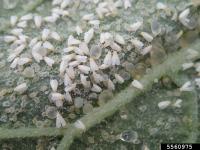
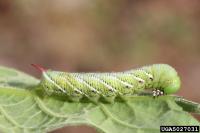

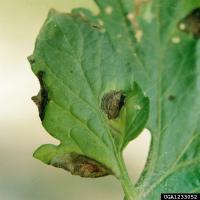
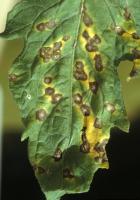
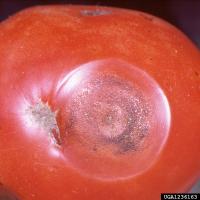
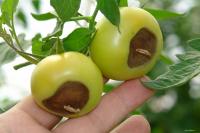
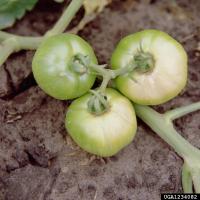
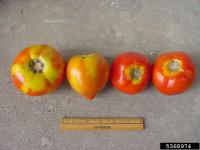
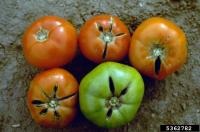


0 Response to "What Animal Sucks The Insides Out Od Tomatoes In My Garden"
Post a Comment